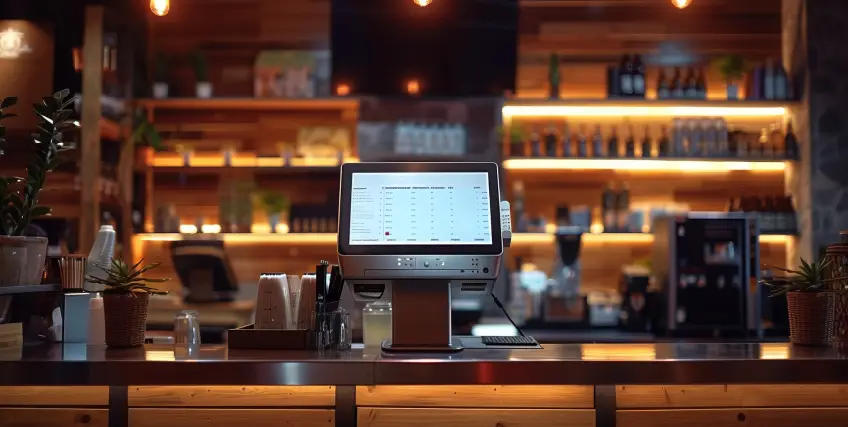How Small Restaurants Can Maximize Deductions for Waste, Spoilage & Food Waste Donations
August 07, 2025 | Last Updated on: August 07, 2025

Spoiled inventory, uneaten food, and donation leftovers. These aren’t just trash; they’re potential small business tax deductions hiding in plain sight. Many small restaurant owners assume that waste is just part of doing business. But the IRS may let you write off certain business expenses, including spoilage and qualified food donations. You just need to understand which losses qualify and how to document them.
In this article, we’ll show you how to turn spoilage into savings. We’ll cover IRS forms, tracking systems, and donation records you’ll need. You’ll also learn how to use cost of goods sold (COGS) to back your claims. Before your next tax return, make sure your trash isn’t where your savings go.
IRS Rules for Waste: What Small Restaurants Can Potentially Write Off
Not all waste qualifies as a write-off, but a surprising amount does. If you’re running a restaurant, it pays to know the difference. Here’s the breakdown:
1. Spoiled Inventory
Power outages, refrigeration failures or sometimes even poor turnover can lead to food spoilage. Believe it or not, these event can qualify as a deductible business expense. All you need to do is to keep purchase receipts, the date of spoilage, and reason logged. If you are questioned by the IRS on your tax return, this documentation can prove to be very important and handy.
2. Food Donations
Food donation is another way to potentially claim small business tax deductions. Any food donated to legitimate 501(c)(3) organizations falls under this scheme. You can potentially get small business tax deductions up to 50% of the FMV along with the cost of goods sold (COGS). But you will need written acknowledgement from the nonprofit organization and a detailed list of donated items for this.
3. Expired Goods
Items that expire before they’re used or sold, especially those you cannot donate, can also be deducted as business losses. Be sure to document shelf life, purchase date, and disposal method.
4. Damaged Deliveries
Got a shipment of eggs that arrived cracked? Or produce that was spoiled in transit? If the supplier doesn’t reimburse you, that loss may still qualify under small business deductions .
Understanding what qualifies under IRS Section 162 can help small restaurant owners minimize their tax liability and better manage business income. When in doubt, keep detailed records and consult a tax professional to ensure you're in full compliance.
Know the Numbers: FMV, COGS & Your Tax Write-Off
Before writing off donated meals, you need to understand how the IRS views their value. You don’t get to deduct the full retail price. Instead, the IRS uses a formula combining Fair Market Value (FMV) and Cost of Goods Sold (COGS). Let’s break it down with examples.
What Is FMV and Why It Matters
The Fair Market Value is the price a willing buyer would pay for the item, not your menu price. For example, if a lasagna sells for $14, but its ingredients cost $6, FMV could be $7–$8. As per IRS guidelines , you’re allowed to deduct up to 50% of the FMV. That means $3.50–$4 in this case. Overstating FMV is a red flag and could cost you more during tax season.
Adding COGS to the Deduction
Here’s the bonus: you can also deduct the Cost of Goods Sold. If your donated lasagna cost $6 to make, you can add that $6 to the $4 from FMV. Total deduction: $10. This combination boosts your small business tax deductions. Always keep receipts for ingredients and staff prep hours if applicable.
Spoilage vs. Donations: Which Deduction Is Smarter?
Spoilage and donations both reduce your taxable income, but they follow different IRS rules. One is simpler, the other often gives bigger small business tax deductions. Let’s compare the pros of each.
Benefits of Writing Off Spoilage
Food spoilage is not an uncommon issue. And the IRS does allow businesses to deduct the cost of goods sold for spoiled items. But only if it is properly documented. What’s more is that there is no FMV calculation needed and no coordination with charities. The good news is that this small business tax deduction fits very well into your business expenses on Schedule C , especially if you’re a sole proprietor. But keep in mind that the write-offs might be smaller compared to donations.
Benefits of Donating Leftovers
You can increase your small business tax deductions and support your community all in one single step - by donating to organizations under 501(c)(3). You can claim up to 50% of FMV plus COGS. It can raise your brand's optics and get you more savings. But it will also mean more paperwork.
You may also like: Using a Small Business Loan to Open Your First Restaurant What to Expect
How to Document Food Waste for Deductions
You will need your documentation in place if you are looking to avail the best small business tax deductions. The IRS does not accept guesswork. It works on solid documentation. And you will be the beneficiary because these tracking methods will ensure your spoilage and donations are eligible for a write-off.
Use Inventory Logs
Track what you buy, when it arrives, and when it goes bad. You should also note the reason for loss, like power failure or over-ordering. These logs become part of your tax preparation and help validate deductible business expenses.
Record Every Donation
When you donate any food item, log the type along with quantity, FMV, COGS, and the nonprofit’s details who receive the item. It is important that you do so. Also attach the acknowledgement letter and don’t forget to keep photos or digital records. You will need this for IRS Form 8283 . It will help protect your small business tax deductions and maximize savings.
Sync with Your Accounting Software
Most restaurant owners now use tools like QuickBooks, Xero, or FreshBooks. Syncing your donation and spoilage logs ensures cleaner reporting and fewer headaches come tax season. Ask your CPA or tax professional to tag these events properly under small business tax deductions.
Proactive Ways to Lower Write-Offs
Avoiding waste altogether is even better than writing it off. These kitchen strategies not only reduce business expenses, but they also help you tighten your margins and stay ahead of rising costs. Here's how smart restaurants manage spoilage.
Smarter Inventory Planning
Order based on real demand, not guesswork. Use past data, weather trends, and reservation forecasts to guide purchases. Overbuying leads to spoilage and shrinkage. Managing your inventory smarter can help reduce waste and qualify more accurately for small business tax deductions if any losses occur.
Reduce Your Menu
A bloated menu means more unused ingredients. Focus on high-margin, best-selling items. Cross-utilize ingredients across dishes. Smaller menus simplify kitchen operations, cut spoilage, and help minimize deductible business expenses from waste.
Monitor Waste Logs
Train staff to log daily waste, as to what was tossed, why, and how much. This data highlights problem areas like over-portioning or poor prep. Long term, this can reduce your dependency on small business tax deductions related to spoilage.
Common Write-Off Errors Restaurants Make
Maximizing small business tax deductions is smart unless you do it wrong. The IRS is strict about food waste and donation claims. Here are some risky moves that small restaurants must avoid.
Overestimating FMV
Listing your menu price as the donation value is a common mistake. You must use the Fair Market Value, not what you charge customers. Overstating FMV can raise your tax bill later if the IRS adjusts your deduction. Stick to market averages and use your accounting software for reliable values.
Missing Proof for Donations
No signed letter from the nonprofit? That deduction’s gone. IRS rules require acknowledgment for any donation over $250. For donations above $500, Form 8283 is mandatory. Without documentation, you lose your small business tax deductions and risk a penalty during the audit.
Double Dipping
You can't write off spoiled food and then also donate it for a separate deduction. That’s a big red flag. Choose one path per item, either business loss or donation. Mixing both will raise questions and could trigger an audit or revision of your tax return.
These steps help small business owners avoid errors and improve their tax savings during filing season. Accurate records also keep your deductible expenses audit-ready. This is especially important for sole proprietorships, partnerships, and independent contractors using Schedule C. Even if the deduction seems small, it adds up over the year and across thousands of transactions.
Also Read: The Impact of Loan Rates on the Food and Beverage Industry, Business Funding for Restaurants
Conclusion
No matter how organized your kitchen is, food waste is part of the business. But it doesn’t have to go unnoticed on your tax return. Whether you’re discarding spoiled goods or donating leftovers, you may be able to convert that waste into valuable small business tax deductions and tax breaks for small businesses.
The key lies in documentation, fair valuation, and smart filing. Tracking your losses, understanding IRS limits, and keeping receipts ensures you get every dollar you’re entitled to. These write-offs can trim your income tax significantly over the tax year.
Don’t let those lost tomatoes or day-old pastries be a lost opportunity. With the right records and a good tax professional, your waste could turn into serious tax savings. It is always recommended that you consult with a tax professional before making any decision.
FAQs About Small Business Tax Deductions on Spoiled & Donated Food
1. Can I deduct spoiled food as a small business expense?
As a small business tax deduction, spoiled food can qualify but only if it is recorded accurately. The reason, such as power outage, along with date of spoilage and original purchase price have to be documented properly. Keep the logs and receipts as proof, just in case there is an audit by IRS on your tax returns.
2. How do I calculate the value of donated food for a small business tax deduction?
You can use the FMV at the time of donation, which is typically the resale value and not the menu price. Then you can add Cost of Goods Sold (COGS). According to the IRS rules, you can deduct up to 50% of FMV plus COGS. This way you can maximize your small business tax deductions legally.
3. What IRS forms do I need for food donations?
If your donation value exceeds $500, you’ll need to file IRS Form 8283. For all donations, get a signed acknowledgment letter from the receiving nonprofit. These documents are required to validate your deductible business expenses and avoid problems during tax season.
4. Can I write off both spoilage and donation for the same item?
This is considered double dipping and is not allowed. You must choose one method of small business tax deduction, either as a business loss or as a charitable donation. Trying both can raise red flags and may trigger an IRS review of your tax return.
5. What should be included in a food waste log?
Your log should record the item name, purchase date, spoilage or donation date, quantity, reason for disposal, and original cost. For donations, include the recipient’s info and FMV. A complete log supports your small business deductions and keeps you audit-ready.
Frequent searches leading to this page
Term Loans are made by Itria Ventures LLC or Cross River Bank, Member FDIC. This is not a deposit product. California residents: Itria Ventures LLC is licensed by the Department of Financial Protection and Innovation. Loans are made or arranged pursuant to California Financing Law License # 60DBO-35839




